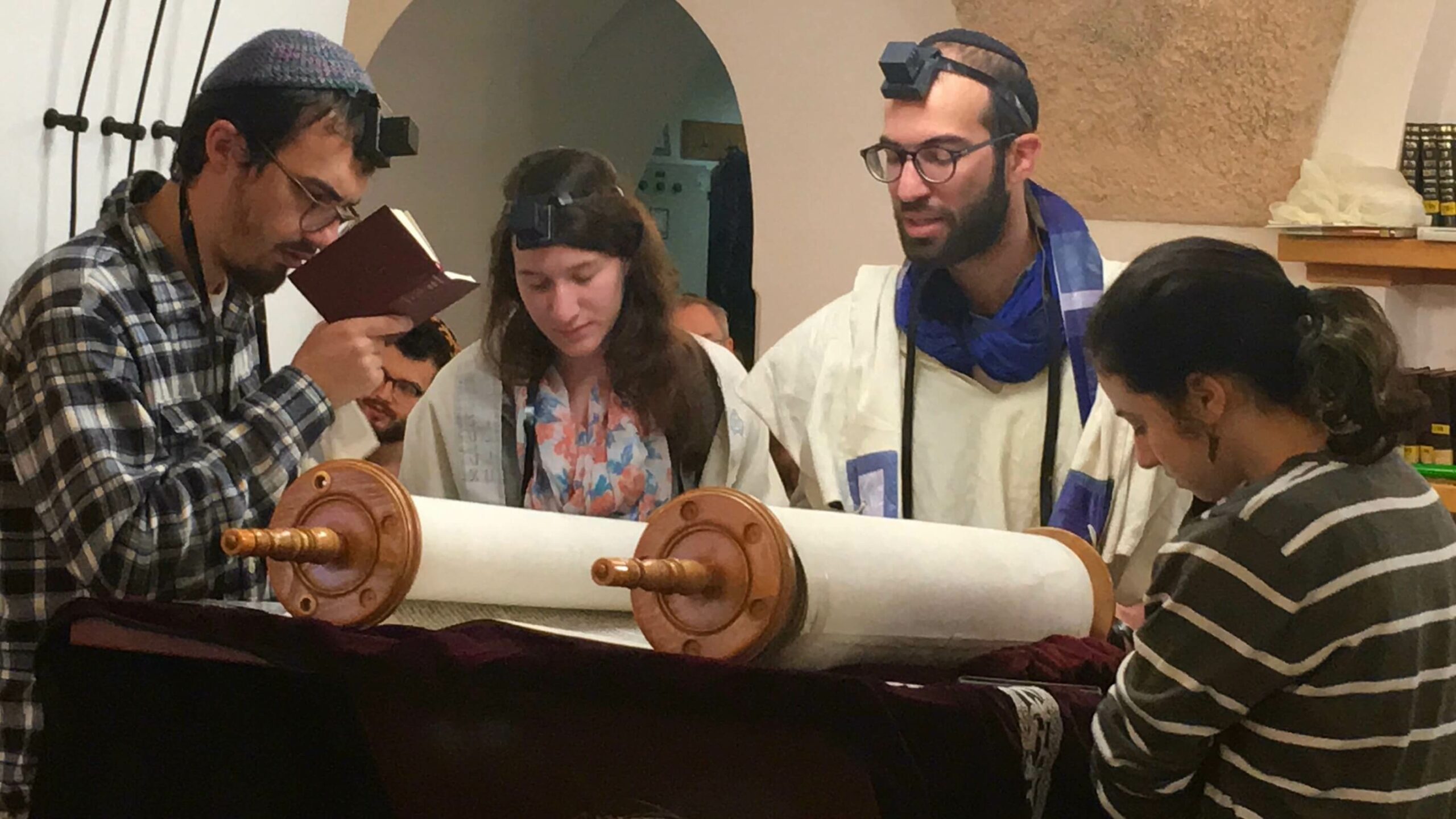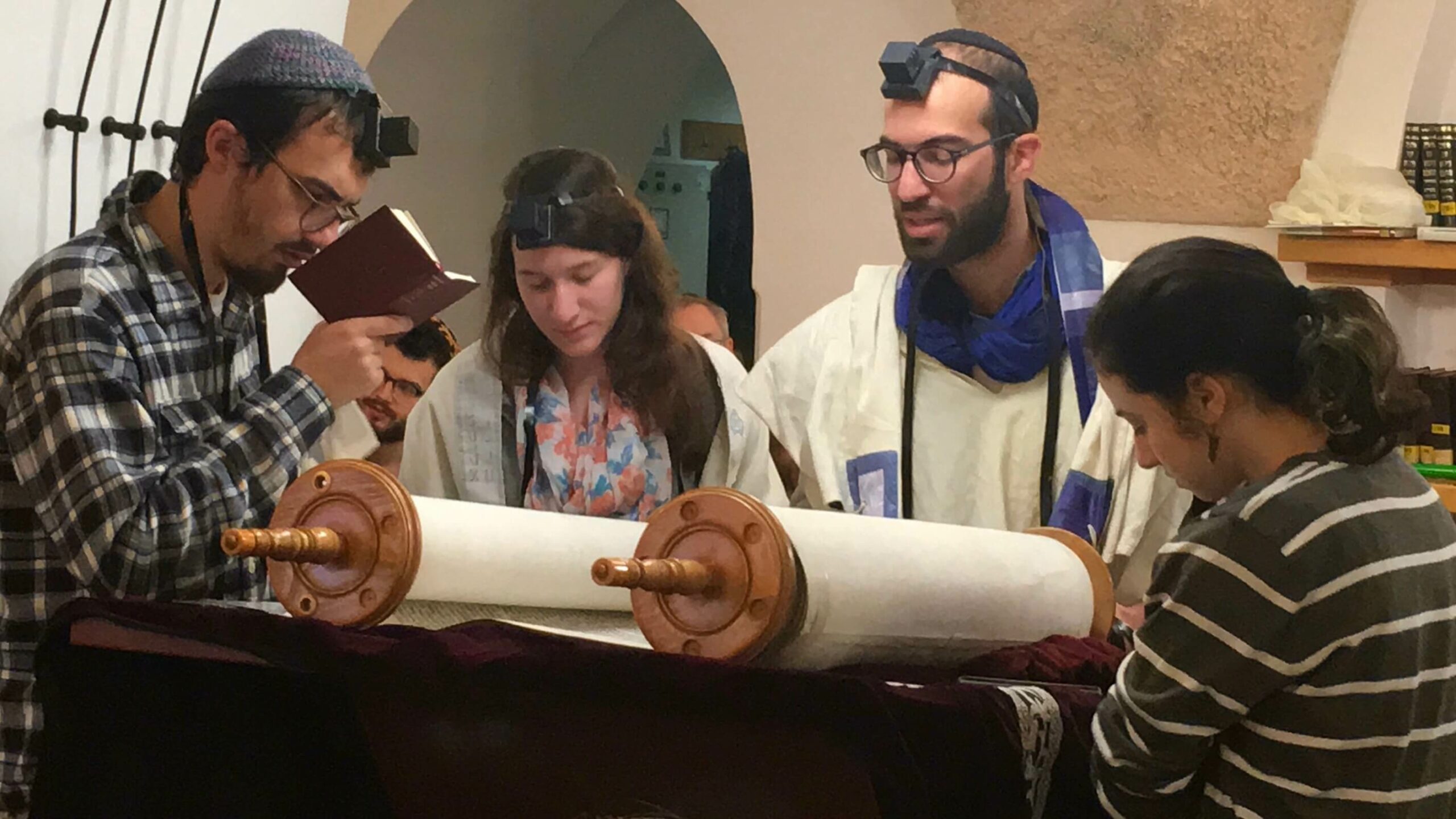

TORAH SPARKS (print friendly version)
Parashat Metzora Shabbat Hagadol April 13, 2019 | 8 Nisan 5779
Annual (Leviticus 14:1-15:33): Etz Hayim p. 660; Hertz p. 470
Triennial (Leviticus 14:33-15:33): Etz Hayim p. 663; Hertz p. 473
Haftarah (Malakhi 3:4-24): Etz Hayim p. 1296; Hertz p. 1005
D’var Torah: The Unexamined Life
Rabbi Joel Levy, Conservative Yeshiva Rosh Yeshiva
The central section of Parashat Metzora deals with the outbreak of tzara’at (a leprosy-like growth) on plastered buildings. On discovering an outbreak the homeowner is instructed to report it to a priest who would then come and inspect the house to determine whether or not the outbreak constituted a true infestation that required full purification rituals. The symptoms of building tzara’at closely resemble tzara’at in human beings, as described in previous chapters in Vayikra. Indeed the parallels between tzara’at in buildings and in human beings are further emphasized by discussions in rabbinic literature.
In Vayikra 14:35 the homeowner states to the priest: “Something like a plague has appeared to me in my house.” In Hebrew: “k’nega nire li babayit.” The Sifra, a collection of halachic midrashim on Vayikra, focuses in on the word “li” – “to me”:“Since it says li (to me) rather than l’ori (to my light) from here they said that “Windows of a dark house may not be opened to examine its tzara’at.’”
The Sifra understands this verse as implying that in order for a house to be officially declared as infested, any infection had to be visible to the naked eye under the lighting conditions that normally prevail in that specific room. (This ruling from the midrash appears also in the Mishnah itself in Negaim 2:3.)
If you chose to, you were permitted to go grubbing around looking for infestations of tzara’at in your house; turning on all the lights, flinging open the windows and searching diligently with a magnifying glass. However, if while doing this, you did indeed discover what looked like an infestation, the house could not yet be declared officially infested. Despite the presence of what looked a lot like tzara’at, the house would not require any purification process.
We can understand why this is the case when we see how the Babylonian Talmud (Sanhedrin 92a) uses this ruling to illustrate a more far-reaching suggestion about how to lead one’s life: “R. Eleazar said: Always be obscure so that you can endure. R. Zera said: We have learned likewise: ‘The windows of a dark house may not be opened to examine its tzara’at.’ This proves it!” And Rashi explains: “It turns out that its very darkness is its salvation, for as long as the priest cannot see it – it isn’t infected with tzara’at.”
Drawing a parallel between a house and a person, this sugya uses the “saving” darkness of the house to teach us to impose a certain “darkness” or obscurity on our lives. Just as the dark house cannot be declared impure, so a life lived without absolute exposure is saved from being declared impure. In other words, a person should not expose all their inner workings to public scrutiny. We all contain a dark side, a core of impurity, skeletons in the cupboard, desires and instincts that would seem very ugly if we were to display them to the public. Every home contains fungi and bacteria (not to mention dubious moral practices) if we look hard enough, and every soul contains elements which should be left in the private realm rather than being brought to broad public attention. What constitutes the “natural light” of one’s existence is something worth thinking about, but the principle seems to be clear – an absolutely transparent existence would be unendurable. The public sphere of existence should be played out on a macro-scale leaving the private realm to the magnifying glass and the microscope.
Contrast this with the process of searching for chametz on the night before Pesach. The ritualized search for chametz performed at night is conducted with a ner, a lamp or candle (Mishnah Pesachim 1:1). The Talmud (4a) suggests that the search must be at night because the whole family will be present and because “lamp light is good for searching!” This second suggestion is perplexing; surely daylight would be better for spotting chametz? The Mishnah Berurah suggests that a night-time search by lamp or candle is not so good at lighting up easy to spot places but it is the only way of lighting up the usually dark inner recesses of cracks and holes. Natural light illuminates the superficial, but obscures the inner recesses; the search for chametz requires the type of unnatural light that penetrates into normally unseen places. For further thought: What is the difference between chametz and tzara’at, or between Pesach and the rest of the year, such that we conduct only a superficial quest for the former and an intense and unlimited search for the latter? What about Pesach requires examining what we are normally permitted to overlook?
Parashat Metzora Self-Study
Vered Hollander-Goldfarb, Conservative Yeshiva Faculty
This week we are continuing with topics related to tzara’at (known as leprosy) and issues of purity – a state that a person enters and exits under specific conditions. It is not a physical situation. Its main impact is a limiting of participation in holy rituals, and for tzara’at – a physical removal from the community while the condition persists.
1) The person who has tzara’at was removed from the camp. When the tzara’at period comes to an end, s/he is brought to the Kohen (14:2), just as we saw that s/he was when the problem started. Why do you think that the person has to be brought rather than take the initiative himself?
2) The person who had tzara’at and is now becoming pure has to go through a purifying ceremony (14:4-7). In the initial part of the process, the person is passive. Why do you think s/he is not active?
3) The first act of the person is shaving and bating, and living outside his tent for 7 days (14:8-9). Why does the person who has been removed from society for the duration of the tzara’at not go back directly to his previous life?
4) 14:33-53 tells the case of a ‘house in the land of your possession’ that develops tzara’at. Why do you think that the stress is on the house being in the land and that it is the land that we possess?
5) Having dealt with the tzara’at that is only defined as such once the Kohen has declared it so, chapter 15 proceeds to deal with bodily discharges that make a person impure. How do bodily discharges differ in nature from tzara’at? Why do you think that the Kohen is not involved in deciding the purity status of a person who has bodily discharges?
D’var Haftarah: Essential Dialogue
Rabbi Mordechai Silverstein, Conservative Yeshiva Faculty
Malakhi was greatly troubled by those who disparaged God and the ways of serving Him. (verses 13-15) In contrast, he acclaims the righteous remnant who remained loyal to the tradition and to each other, using these words: “Then those who were loyal to God spoke (nidberu) to each other. The Lord has heard and noted it, and a scroll of remembrance has been written at His behest concerning those who fear the Lord and esteem His name.” (verse 16) The intent of these words was that those who were loyal would support and encourage each other to “keep the faith.”
The sages, in a number of places in the rabbinic tradition, were particularly taken by two phrases juxtaposed in this verse (noted in bold script) because they came to reflect fundamental elements of the rabbinic outlook and culture. In the following midrash, they were also inspired by a play on the word “nidberu”, reading it instead as a different form of the verb (nadberu), formed from the same root letters, thus changing its mean from “spoke to each other” to “submit or subdue each other”: “Then when those who were loyal to God submitted to each other, God listened. Rabbi Hiyya taught in the name of Rabbi Abba: When the sages sit and submit to each other’s words, the Holy One Blessed be He pays attention to their words, as it says: ‘The Lord has listened and noted’. Said Rabbi Yaakov bar Zavda in the name of Rabbi Abahu: Not only this, but God corrects their errors for them.” (adapted from Midrash Tehillim 30:5 Buber ed. p.236)
This “submission” sounds like a violent process. What it describes is a Jewish process of study, known as hevruta, which is as old as the rabbinic tradition. This type of learning, characteristic of yeshiva learning, usually takes place in pairs, where the study partners use dialogue and argument as a means for clarifying and honing their learning. When study is done this way, “God listens” and helps “correct their answers.”
The Pesach Seder is modeled on this kind of dialogical learning. Its focus is on sharing and discussing the meaning of the story of the redemption from Egypt and the practices involved in experiencing it. It is an experience meant to be shared and debated as our sages noted: “Our sages taught: If his child is intelligent, s/he asks the parent, while if the child is not discerning, then the spouse asks the question; but if not, one asks oneself. And even two scholars who know the laws of Pesach ask one another.” (Pesachim 116a)
May this year’s Hag HaMatzot be a source for much fruitful debate in keeping with Malakhi’s message.







